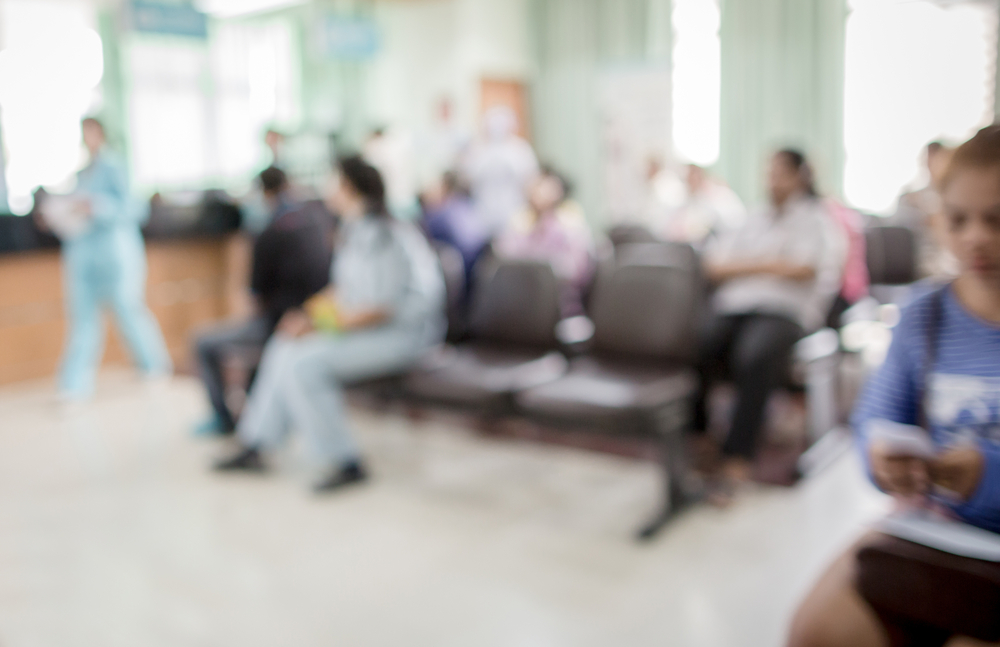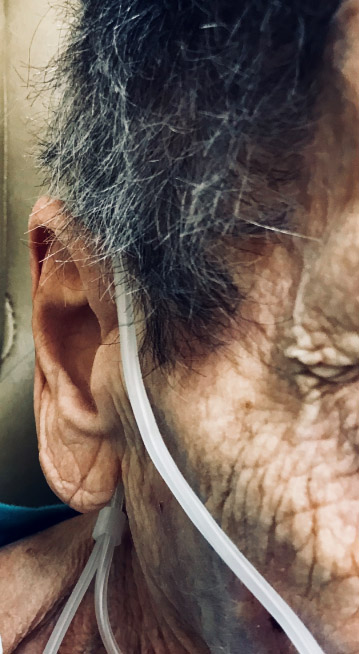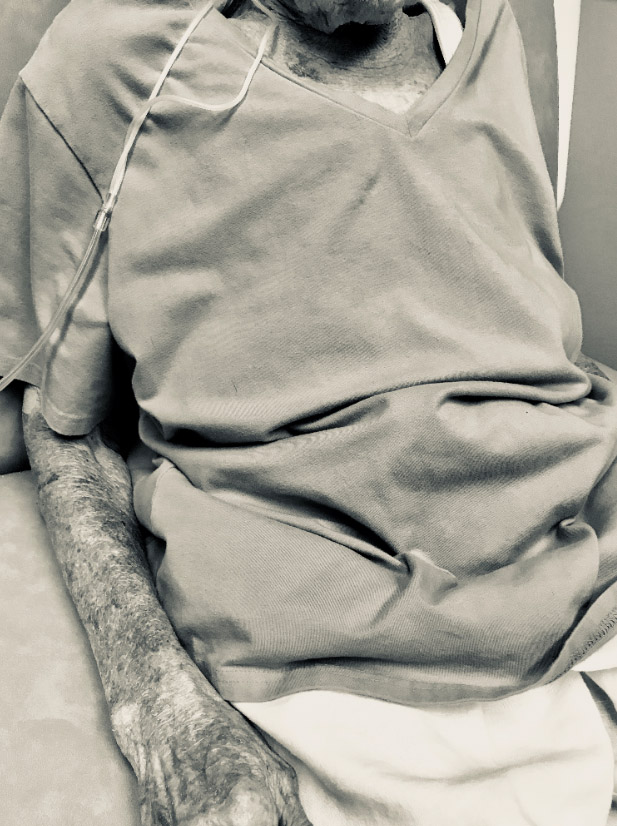What scares me is the fact that I didn’t really pay attention to this until I started developing quality measures for wound care. But now that I’m paying attention, the extent of it is terrifying. In one day I saw three patients who were starving, two of whom had on make-up and jewelry (it IS the South), and all of whom have loving families.
The first patient above has a BMI of 17.3, and the second a BMI of 16.1. Keep in mind that a BMI below 18.5 is low. I saw a lot of people with a BMI less than 18 in Haiti, but this is HOUSTON. The lady whose BMI is only 16.1 has a below knee amputation that is falling apart. Both patients have brittle nails, dry skin, low blood pressure, thin hair that is falling out, temporal wasting, and they are asking for blankets to keep warm.
The third lady, pictured above, has a normal BMI. Why? I reached out to hold her hand and thought, “Wait! What’s this?” She had breast cancer more than 20 years ago but has never had lymphedema of her hand and arm until a few weeks ago. Now she has peau d’orange changes on her arm and both legs, and a tense abdomen full of ascites. Yes, she has congestive heart failure, but she’s still living alone, DRIVING and supposedly going to the grocery store. Here’s a typical day’s menu: breakfast – cinnamon toast; lunch – soup; snack – cookies, dinner- not hungry. She’s been referred to me for a wound that just won’t heal since she bumped her leg on something… I spent the majority of my day NOT talking to patients about what we would put on their wounds but about what they needed to put IN their mouths – about protein and vitamins, and coming back from the brink of starvation in one of the most affluent neighborhoods in America.
However, I’ve got some good news for all Nurse Practitioners and for physicians and podiatrists subject to MIPS working in hospital based outpatient wound centers – if you haven’t done anything about MIPS participation for 2018 you can still keep from losing 5% of your Medicare Part B payments. Last year the US Wound Registry asked CMS to recognize some specific clinical practice improvement activities targeting patient reported outcome tools in relation to wound care, and they did! In 2018, all NPs and physicians practicing in the HOPD can implement a clinical practice improvement activity which gets patients to perform a self assessment of their nutritional status – and CMS has awarded that a HIGH value Practice Improvement Activity. One High value IA is all NPs and physicians in the HOPD need to keep their Medicare Part B payments. We recommend the Nestle Self MNA. You need to start by October 1, 2018 to meet the requirement of a full 90 days of participation. Find out more on the USWR website. We recommend the Nestle Self MNA. Find out more on the USWR website.
Additional Reading:
Appendix B of the 2018 Fact Sheet

Dr. Fife is a world renowned wound care physician dedicated to improving patient outcomes through quality driven care. Please visit my blog at CarolineFifeMD.com and my Youtube channel at https://www.youtube.com/c/carolinefifemd/videos
The opinions, comments, and content expressed or implied in my statements are solely my own and do not necessarily reflect the position or views of Intellicure or any of the boards on which I serve.







